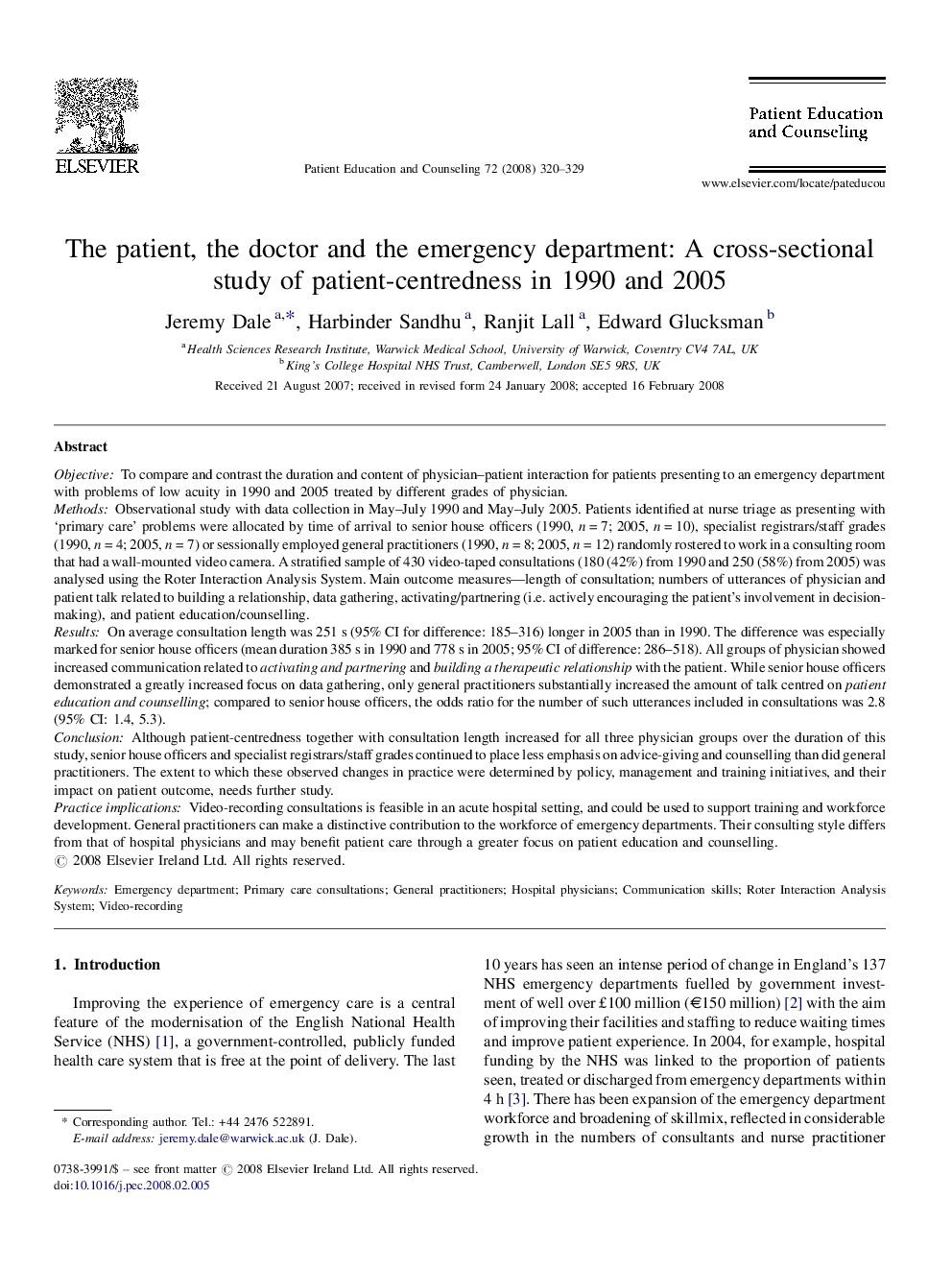| Article ID | Journal | Published Year | Pages | File Type |
|---|---|---|---|---|
| 3815360 | Patient Education and Counseling | 2008 | 10 Pages |
ObjectiveTo compare and contrast the duration and content of physician–patient interaction for patients presenting to an emergency department with problems of low acuity in 1990 and 2005 treated by different grades of physician.MethodsObservational study with data collection in May–July 1990 and May–July 2005. Patients identified at nurse triage as presenting with ‘primary care’ problems were allocated by time of arrival to senior house officers (1990, n = 7; 2005, n = 10), specialist registrars/staff grades (1990, n = 4; 2005, n = 7) or sessionally employed general practitioners (1990, n = 8; 2005, n = 12) randomly rostered to work in a consulting room that had a wall-mounted video camera. A stratified sample of 430 video-taped consultations (180 (42%) from 1990 and 250 (58%) from 2005) was analysed using the Roter Interaction Analysis System. Main outcome measures—length of consultation; numbers of utterances of physician and patient talk related to building a relationship, data gathering, activating/partnering (i.e. actively encouraging the patient's involvement in decision-making), and patient education/counselling.ResultsOn average consultation length was 251 s (95% CI for difference: 185–316) longer in 2005 than in 1990. The difference was especially marked for senior house officers (mean duration 385 s in 1990 and 778 s in 2005; 95% CI of difference: 286–518). All groups of physician showed increased communication related to activating and partnering and building a therapeutic relationship with the patient. While senior house officers demonstrated a greatly increased focus on data gathering, only general practitioners substantially increased the amount of talk centred on patient education and counselling; compared to senior house officers, the odds ratio for the number of such utterances included in consultations was 2.8 (95% CI: 1.4, 5.3).ConclusionAlthough patient-centredness together with consultation length increased for all three physician groups over the duration of this study, senior house officers and specialist registrars/staff grades continued to place less emphasis on advice-giving and counselling than did general practitioners. The extent to which these observed changes in practice were determined by policy, management and training initiatives, and their impact on patient outcome, needs further study.Practice implicationsVideo-recording consultations is feasible in an acute hospital setting, and could be used to support training and workforce development. General practitioners can make a distinctive contribution to the workforce of emergency departments. Their consulting style differs from that of hospital physicians and may benefit patient care through a greater focus on patient education and counselling.
